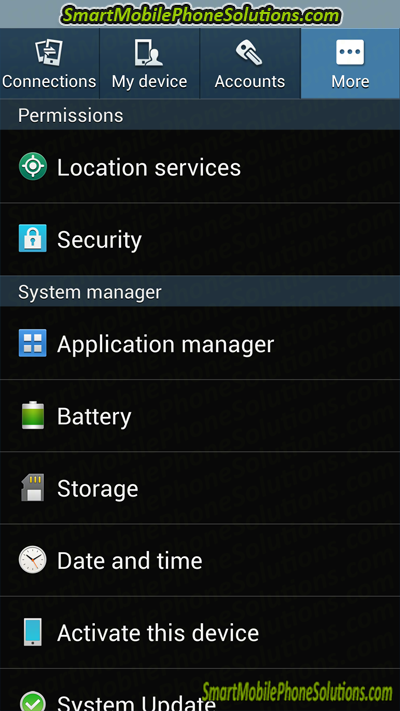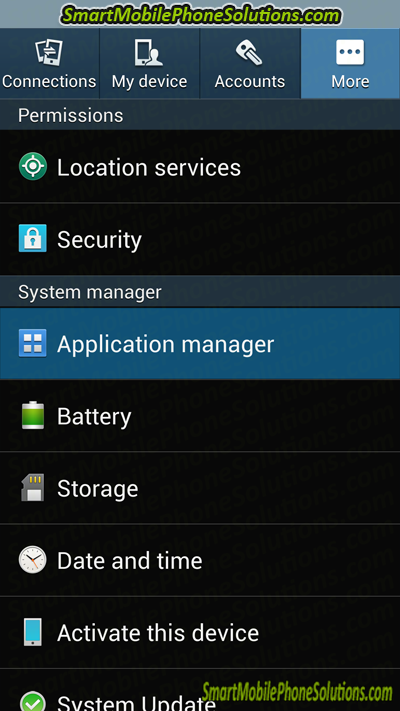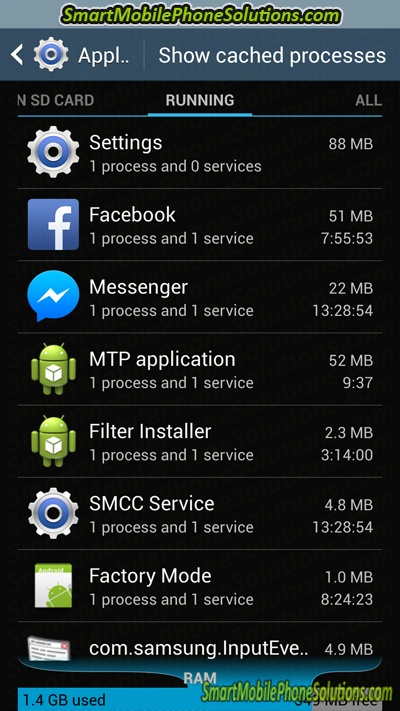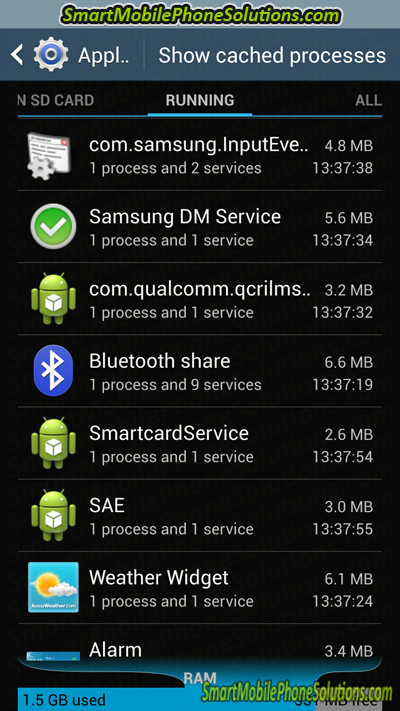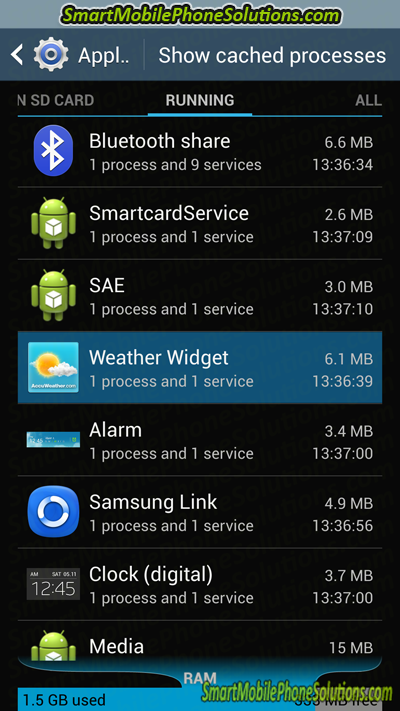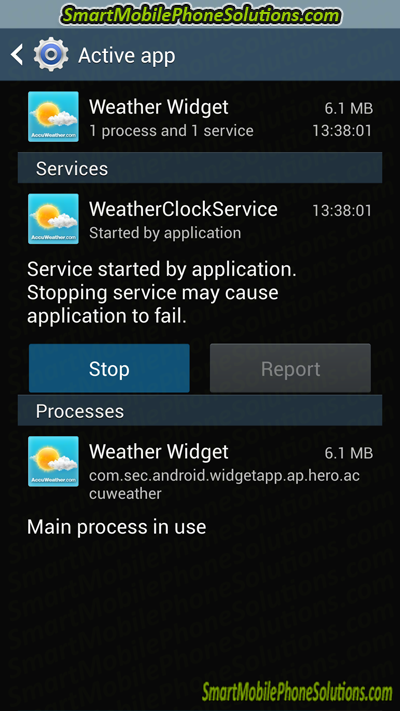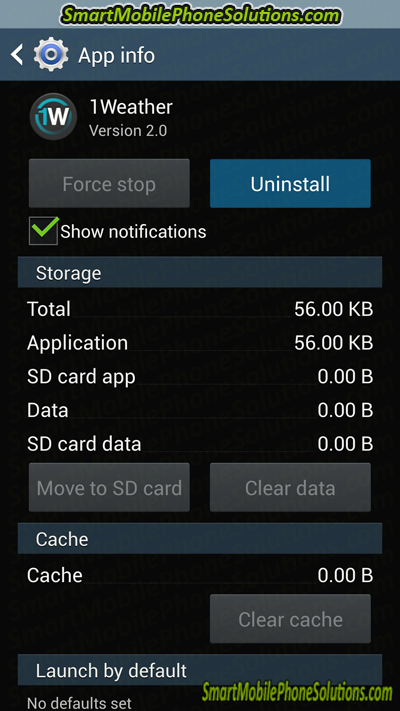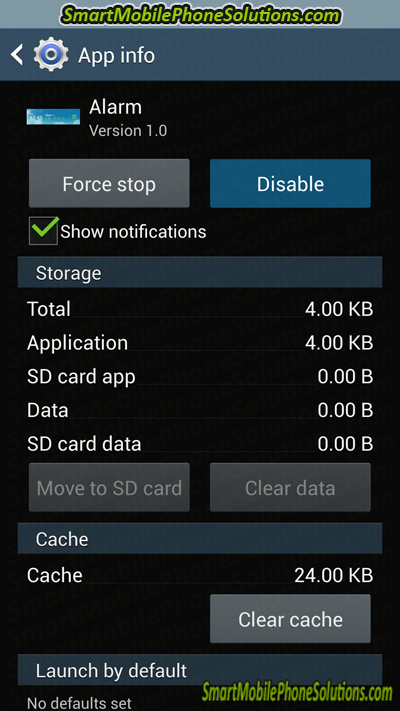- How to stop apps from running in the background on Android
- Jump to
- Why stop background apps on Android?
- Update your phone to the newest Android version
- Analyze battery consumption statistics
- Control your background processes
- I’m in! But I don’t know which apps to stop
- Task killers and RAM optimizers: the great debate
- How to view running applications on an Android cell phone
- Running applications – Common side effects
- Locating running applications
- Stopping an application from running
- Disable or uninstall the app
- Do not use automated task killers
- Some applications should be left alone
- Thanks for reading
How to stop apps from running in the background on Android
Android smartphones have gotten very powerful over the years and are great at multitasking. Over time, however, you might have seen smartphones degrade in performance and become sluggish. You may also notice that the battery life is also adversely affected. What if we tell you that on most phones, these issues can be fixed by simply optimizing the background apps? Read on to find out how!
Jump to
Why stop background apps on Android?
For those of you who chanced upon this article without actually facing an issue with their phone, you might wonder why would someone even consider to stop background apps. Here’s an explanation.
As you keep using your Android phone, you tend to install several apps on your device. Over time, chances become high that at least some of them aren’t well optimized for your phone or may have a bug. Some of these apps may even contain malware – especially the ones you did not download from trusted sources.
Oftentimes, these apps may keep running in the background even after you thought you closed them. The result is sluggish performance and a marked reduction in battery life. Let us now check out the various steps that can be taken to solve this problem and stop background apps on Android.
Update your phone to the newest Android version
In case you have a relatively old phone with you, the simplest way to stop apps from running in the background is to make sure your phone runs the latest version of Android. Starting Android 10, Google has introduced several power management features that prevent errant apps from consuming too much power or hogging too much power.
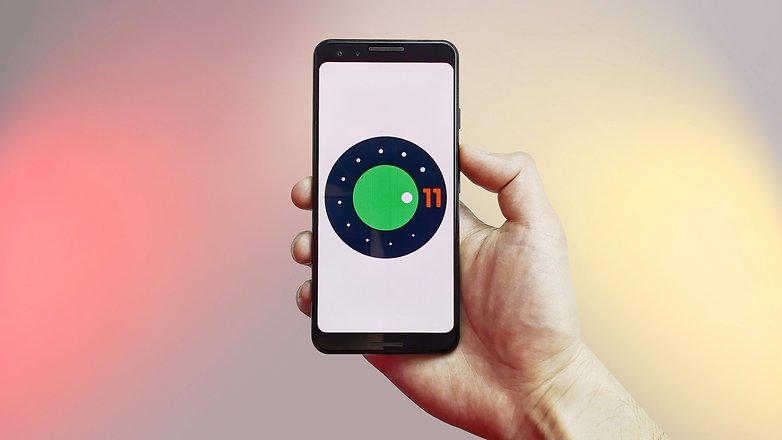
If you are on a newer version of Android (the latest stable version is Android 11) you are already doing pretty good as Google has enhanced power management features even further. On phones running Android 10 and 11, it would be a good idea to turn on a feature called Adaptive Battery. On phones running stock Android, you can enable Adaptive Battery by going into Settings -> Battery -> Adaptive preferences.
Apart from optimizing errant apps, the Adaptive battery mode also optimizes the charging speed of your phone to ensure that your battery lasts a long time.
Analyze battery consumption statistics
There is no denying that Android offers a comprehensive battery statistics tool where you can see what apps are draining the battery the most. To access the battery stats page tap on Settings -> Battery ->View battery usage.
The phone will now open a page with the list of apps that are consuming power. What is helpful about this page is that it lists these apps in an order — with the ones consuming the most power placed at the top. Chances are high you will see some of your most used apps high up in the list. However, if you note some third party apps that you know you haven’t used for a long time in this list, it might be a good idea to either force stop or uninstall it.
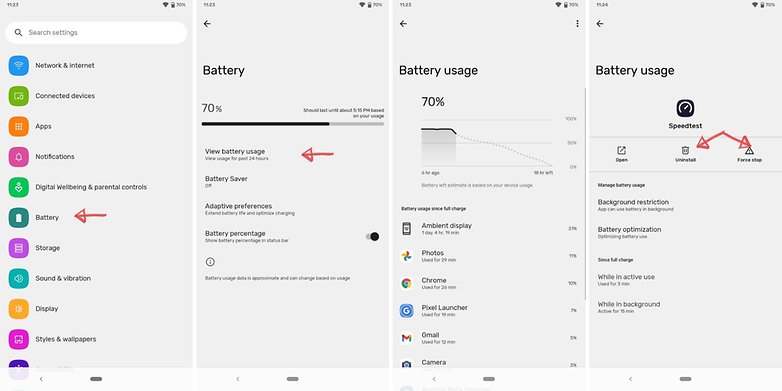
To force stop or uninstall an app, tap on the app and and you will see a page with both these options. Note that you may also see some apps here that are part of Android and Google Mobile Services. You can ideally leave them be since they are essential for the smooth and stable functioning of your phone.
Control your background processes
Incase you are not too happy with the results of disabling apps listed within the battery stats menu, it’s time to try out slightly advanced steps. The best way to gain control of your processes is to have a dig around under the hood using the monitoring tools built into Android.
In some cases, before you can start, you need to enable developer options.
- In most versions of Android, this involves going to Settings > About phone and then tapping Build number about seven or so times. You’ll get a notification telling you that Developer options have been unlocked once you’re done.
- For many handsets, the next thing you need to look for is a setting called Processes, Process Stats, or Running services. You can find this in Settings > System > Advanced> Developer options > Running services. That option takes you to a list of running processes showing how much RAM each is using.
- Obviously, it’ll be tempting to stop the most RAM-hungry apps from running in the background, but you’ll want to pay some attention to what you’re stopping before you go ahead. Stopping some apps might crash your phone.
- You can also tap the settings option when in the Services/Processes menu to switch between running processes and cached processes.
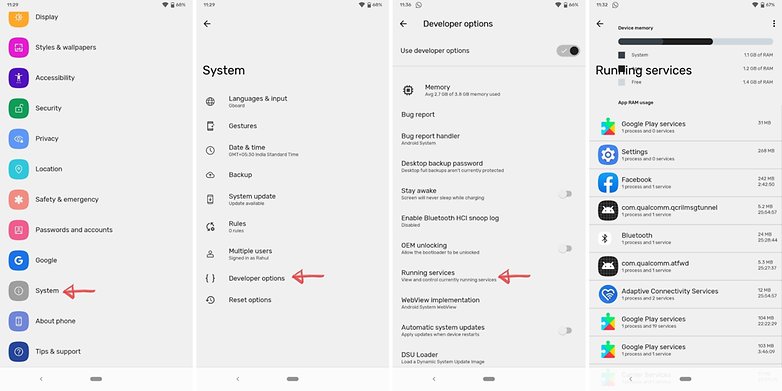
I’m in! But I don’t know which apps to stop
OK. If you don’t want your app/phone to crash, err on the side of caution and use some common sense. The app marked ‘Google Services‘, or pretty much any app that starts with ‘Google’ shouldn’t be manually stopped.
On the other hand, if you look through the list and see messengers and music players idly draining your battery in the background, then you can go ahead and stop them in relative safety. Truly crucial apps usually won’t allow you to force stop them anyway.
- To stop an app manually via the processes list, head to Settings > Developer Options > Processes (or Running Services) and click the Stop button. Voila!
- To Force Stop or Uninstall an app manually via the Applications list, head to Settings > Apps > All Apps and select the app you want to modify.
- Don’t delete any apps that appear when you select the Show System Apps option. You can see system apps by tapping on the three dots on the top right corner.
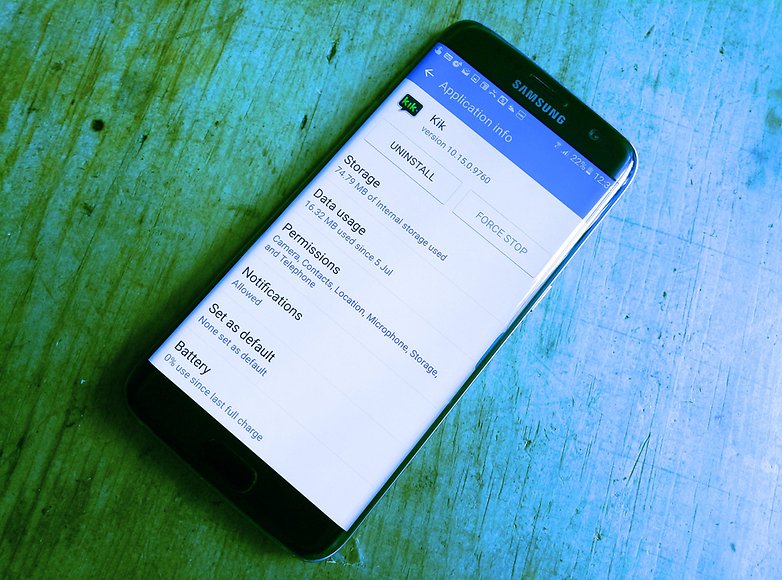
Task killers and RAM optimizers: the great debate
With Android software and hardware improving over time, some people will argue that the use of task killer apps is going to do more harm than good in terms of processing and battery life. As one of the problems you’re trying to fix is apps running in the background draining your resources, adding another one that has the purpose of doing explicitly that (it needs to monitor the services in use on your phone, therefore always needs to be running) seems a bit counter-intuitive.
A task killer that repeatedly force-closes an app in the background over and over is almost certainly going to drain your battery more as it continues the ‘restart and kill’ process. You might be better off not installing the task killer in the first place and just letting it run.
So there you have it! We have discussed several ways in which you can can stop background apps from running on Android devices. We hope the steps mentioned here proved helpful for you. In case you know if any other cooler methods that we might have missed out, share them with us in the comments below!
This article was comprehensively updated in July 2021. Older comments have been retained.
Источник
How to view running applications on an Android cell phone
Are you looking for a way to see what applications may be running in the background of your Android cell phone? Then look no further. This guide will demonstrate with step by step instructions not only how to check an android to see what might be running behind the scenes but will also show how to stop these things from running as well as how you might be able to prevent it from running without your permission in the future.
Running applications – Common side effects
Here is a list of just a few of the issues that can frequently occur when there are too many things running on an Android smartphone. If your cell phone is experiencing any of these issues then your phone might have too many programs running at once, even running in the background without your knowledge, and you should certainly follow the advice listed in the article below.
- Cell phone has started to run unusually slow or has been acting a little sluggish.
- Cell phone is locking up or freezing.
- Cell phone has been getting warm, hot or has started to overheat.
- Applications have started crashing unexpectedly.
- Error messages have started popping up.
- Battery suddenly seems to die or drain faster than it should.
- Cell phone has begun to power off or crash for no apparent reason.
Locating running applications
Finding out the applications that may be running on the background of your android smartphone is actually easier than you might think. The following is a step-by-step example using an Android smartphone running on Android 4.2 Jelly Bean.
Please Note: while this example uses a Samsung Galaxy S4 running on Android 4.2 to demonstrate the process of locating applications that are currently running and the steps involved should be the same or very similar for most Android smartphones the steps involved to accomplish this task on your phone may be slightly different depending on what phone you have and what version of Android it is currently operating on.
Start out by going to the main screen of your smartphone.
Tap on the Menu key and then open the Settings.
Select the More tab towards the top of the screen if it isn’t already selected.
Note: depending on the version of Android that your cell phone is running on, your cell phone might not have a “More” option. If so then you can simply browse through your phones Settings until you locate your phones Application manager.
Open the Application manager.
You will then see a list of applications. The default list is usually the applications that you downloaded onto your smartphone and you should see the “Downloaded” option on the top of the page to let you know which list is selected. If you drag your finger across the phone to the left that should allow you to select other lists of applications including what is on your “SD card” and if you swipe again what is “Running”. You can even view “All” of the applications installed on your smartphone.
Make sure that the “Running” list is selected in order to view all of the applications that are currently running on your android smartphone.
It’s as easy as that!
Stopping an application from running
Let’s say that you notice a few applications seem to be running which you are not currently utilizing and you would like to stop the application(s) from running on your android cell phone.
Scroll through the applications until you find something that you are not currently using and don’t want your phone to be running.
In this example I am going to use the weather widget.
Once you have located the application that you want to stop from running go ahead and select it.
After you have opened the active app you should see a bunch of information regarding that application.
You should also see a “Stop” or “Force stop” option on that same window. Simply press that “Stop” option and the application should stop running.
Disable or uninstall the app
After accessing your Androids App Manager and after locating and selecting an application, while viewing the “App info” window (mentioned above) along with a “Stop” or “Force stop” option you may also have an “Uninstall” or “Disable” option as well and the option provided is going to depend on the application that you selected.
For third party applications that you yourself have downloaded onto the phone you should see the option to “Uninstall” the application which will delete or remove the application from your cell phone.
For applications that came pre-installed on the phone when it was first purchased (apps that remain on the phone after performing a factory data reset) you will not usually be able to uninstall the app from the phone by default and while the app may not let you delete it your phone should allow you to “Disable” it so that the application will stop running and stop consuming your devices system resources.
Note: while you may wish to uninstall some of these pre-installed applications most of the time these types of apps are not designed to be removed from the phone. Many such programs are referred to as bloatware and are often added by your cell phones wireless carrier. Using the disable feature should allow you to manage these types of application(s) on your phone. If you wish to permanently remove this type of bloatware from your Android device you would need to look into rooting your device in order to do so.
Important Note: Use caution when disabling (or if rooted, uninstalling) apps that you are unsure about or that your phone requires to function properly. For example if you chose to disable or remove the Keyboard application… it could have a seriously negative effect on the functionality of your cell phone and depending on the application in question it could result in not being able to use your cell phone at all. So be selective and proceed with caution if you choose to do this. Generally your phone will be fine but this is something to keep in mind when disabling or uninstalling applications. If you are unsure you may want to leave the application alone or at the very least create a backup of your cell phone before proceeding just in case something unexpected and undesirable occurs.
Do not use automated task killers
Should I use an automated task killer? I don’t recommend it and here is why…
Android does a pretty decent job at managing running applications for you already and while it may not be entirely perfect using third party programs to manage applications can often cause more problems than they solve. Automated task killers actually do the very thing that you are trying to prevent. In order for an automated task killer to swat applications that start running by themselves the task killer must run in the background of the phone, which of course uses up system resources and can lead to slower performance and other such issues.
Some automated task killers can also cause your frequently used applications to run slower because some task killers remove the app from the phones RAM (its temporary memory, not its permanent memory) which helps programs run faster when being opened.
An automated task killer can also cause problems with applications that you want to run in the background. One minor example could be the alarm clock on your cell phone. Let’s say that you use the alarm clock feature on your smartphone, you start to notice that your phone seems to be running slow or has started to get hot so you download a task killer. The task killer may see that the alarm clock is running in the background (which it’s supposed to do so that it can go off at the set time), and the task killer kills the app (aka alarm clock) which prevents it from alarming and from waking you up for work in the morning. Uh-oh!
These are just a few examples, but for the most part I don’t recommend downloading a task killer for your Android smartphone. As I mentioned before they often cause more problems than they solve.
Some applications should be left alone
When you are viewing the running applications on your android smartphone the list of applications that you see might seem a little overwhelming at first and you might not know which applications that you want to keep running and which applications that you want to stop from running.
For the most part when looking at this list of applications you should look for games or other applications that you have downloaded onto the phone that you don’t necessarily need running all the time. If you’re not sure what an application listed is or what it does then it’s probably a good idea just to leave it alone for the time being.
If you feel like a particular application may be causing issues and you are not familiar with the app in question then you might be able to perform a search online to try and figure out what it does or what it is intended for.
If you locate an app that seems to be causing mischief then the next step would be to decide whether or not to disable or uninstall the app from your cell phone.
Thanks for reading
Thank you for visiting the site and reading this article. I hope that you found this guide informative and a useful resource in managing the running applications on your Android smartphone. If you did find it beneficial and would like to show that you liked it then please take a second or two to share it by pressing the Facebook Like and Google + buttons below. Don’t hesitate to also leave a friendly remark in the comment section as well.
Thanks again for visiting. I hope that you have a wonderful day.
Источник


